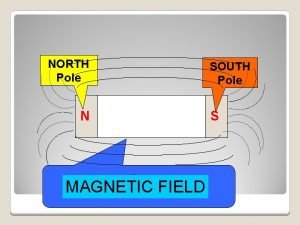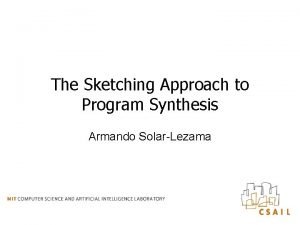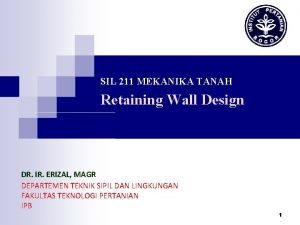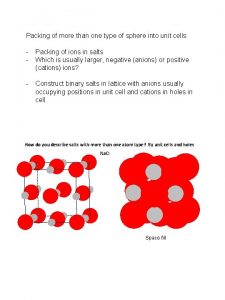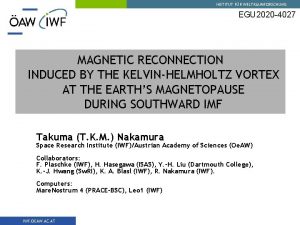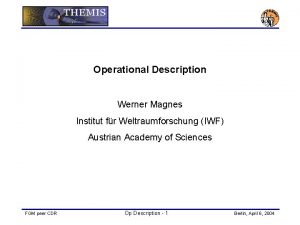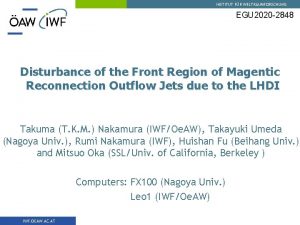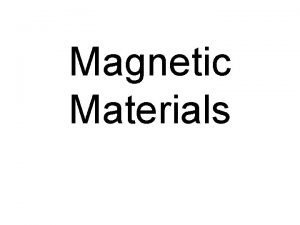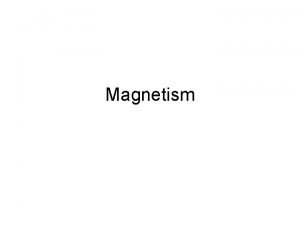INSTITUT FR WELTRAUMFORSCHUNG CHARACTERISTICS OF MAGNETIC HOLES Martin


![INSTITUT FÜR WELTRAUMFORSCHUNG MAGNETIC HOLES What are MHs? Turner et al. [1977] § Magnetic INSTITUT FÜR WELTRAUMFORSCHUNG MAGNETIC HOLES What are MHs? Turner et al. [1977] § Magnetic](https://slidetodoc.com/presentation_image_h2/5529ec6edc5db0af8d7101a938599dbc/image-3.jpg)






- Slides: 9

INSTITUT FÜR WELTRAUMFORSCHUNG CHARACTERISTICS OF MAGNETIC HOLES § § § Martin Volwerk Charlotte Goetz Ferdinand Plaschke Tomas Karlsson Daniel Heyner Brian Anderson Martin Volwerk Space Research Institute (IWF), Austrian Academy of Sciences (ÖAW) IWF. OEAW. AC. AT

INSTITUT FÜR WELTRAUMFORSCHUNG GOAL OF THE STUDY Preparation for Bepi. Colombo Method: Use Messenger data § To do science during the cruise phase § Possibility to use these compressional structures for magnetometer calibration § To study the development of magnetic holes through the inner solar system § Messenger Magnetomer Data during cruise phase § starting from Earth (2005) and arriving at Mercury (2011) § Unfortunately the data before the first Venus flyby are unrecoverably perturbed § Start of study in 2007 § 1 second resolution data IWF. OEAW. AC. AT 2
![INSTITUT FÜR WELTRAUMFORSCHUNG MAGNETIC HOLES What are MHs Turner et al 1977 Magnetic INSTITUT FÜR WELTRAUMFORSCHUNG MAGNETIC HOLES What are MHs? Turner et al. [1977] § Magnetic](https://slidetodoc.com/presentation_image_h2/5529ec6edc5db0af8d7101a938599dbc/image-3.jpg)
INSTITUT FÜR WELTRAUMFORSCHUNG MAGNETIC HOLES What are MHs? Turner et al. [1977] § Magnetic depressions with |B| < 1 n. T in an average field of |B| ∼ 6 n. T, in the form of discrete “holes” in the IMF. § Rotation of the background magnetic field is small from one side of the hole to the other § Assumed to be diamagnetic structures created by inhomogeneities in the solar wind plasma IWF. OEAW. AC. AT 3

INSTITUT FÜR WELTRAUMFORSCHUNG EXAMPLE LINEAR MAGNETIC HOLE Two magnetic holes on 4 February 2008 § Rotation; θ < 10 IWF. OEAW. AC. AT § § Depth: ΔB/B 300 > 0. 8. (a) B field (blue), B 300 (red), and B 2 (green). Panels (b)–(d) show the unfiltered Bx, By, and Bz. Panel (e) shows the ΔB/B 300 4

INSTITUT FÜR WELTRAUMFORSCHUNG OCCURRENCE RATE Searching for magnetic depressions § B 300: Background magnetic field sliding window average over 300 s § B 2: Data smoothed by a sliding window average over 2 s § From ΔB/B 300= (B 300 - B 2)/B 300 the lowest depressions are determined separated by at least 300 s § The total magnetic field strength is B 300> 2 n. T § The depth of the structure ΔB/B 300 > 0: 5. IWF. OEAW. AC. AT 5

INSTITUT FÜR WELTRAUMFORSCHUNG LINEAR MAGNETIC HOLES: Θ < 10° 2 D histograms of the width and the depth of the LMHs § Overall the width does not change much, between 15 and 30 s § Magenta line shows max. occ. rate and cyan line observations by Sperveslage et al. [2000] § The depth range is slightly narrower further away from the Sun IWF. OEAW. AC. AT 6

INSTITUT FÜR WELTRAUMFORSCHUNG LINEAR MAGNETIC HOLES: Θ < 10° 2 D histogram of the width and depth of LMHs as a function of B § The width is rather narrow § Green is median, blue is upper and lower quartile § The depth is rather broad § Higher occurrence of greater depth for stronger B § Green line: exponential function D(B) = a exp{-b B} + c IWF. OEAW. AC. AT 7

INSTITUT FÜR WELTRAUMFORSCHUNG CHANGE IN OCCURRENCE RATE The occurrence rate of LMHs decreases with increasing distance from the Sun Three fits: § Constant number of LMHs, becomes diluted by R-1 Fit: N(R) = a Rb a = 8. 6, b = 0. 44, R 2 = 0. 74 § Exponential decay of LMHs Fit: a exp{b R} a = 19, b = -1, 0, R 2 = 0. 77 § Linear drop off Fit: a + b R a = 18, b = -12, R 2 = 0. 77 Non are good solutions, and assumption that all LMHs are created at the Sun not realistic IWF. OEAW. AC. AT 8

INSTITUT FÜR WELTRAUMFORSCHUNG CONCLUSIONS & FUTURE WORK There is a clear behaviour of the Linear Magnetic Holes measured between Mercury and Mars § There is a slow decrease in occurrence rate from ~14% h-1 to ~4% h-1 § There is a narrow range of widths ~4 - ~30 s over the whole distance. § If the LMHs show a Bohm-like diffusion (like mirror modes) then a constant creation, diffusion and (stochastic) decay needs to occur (between Mercury and Venus) Therefore, more data need to be analyzed, e. g. Bepi. Colombo cruise phase Messenger did not have appropriate plasma data to fully study the LMHs Future work: § Study LMHs with missions including good plasma data (e. g. MMS near Earth) § A dedicated ISSI team to study magnetic depressions in the solar system IWF. OEAW. AC. AT 9
 Magnetic permeability of materials
Magnetic permeability of materials Magnetic flux
Magnetic flux Magnetic moment and magnetic field relation
Magnetic moment and magnetic field relation Magnetic field and magnetic force
Magnetic field and magnetic force Characteristics of magnetic field
Characteristics of magnetic field Sketch program synthesis
Sketch program synthesis Mekanika tanah 1
Mekanika tanah 1 How many octahedral holes in fcc
How many octahedral holes in fcc Armando solar-lezama sketch c like language with holes
Armando solar-lezama sketch c like language with holes How black hole is created
How black hole is created




